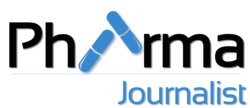Enrollment Completed in Ligand’s Phase 2 Trial of LGD-6972 in Type 2 Diabetes
Ligand Pharmaceuticals announces the completion of enrollment in the Company’s Phase 2 clinical trial with its novel, small-molecule glucagon receptor antagonist LGD-6972 for the treatment of type 2 diabetes mellitus (T2DM). This randomized, double-blind, placebo-controlled study is evaluating the safety and efficacy of LGD-6972 as an adjunct to diet and exercise in subjects with T2DM whose blood glucose levels are inadequately controlled with metformin. The Company expects to report topline results in September 2017.
In this Phase 2 study, subjects with T2DM are being treated with one of three doses of LGD-6972 (5 mg, 10 mg, or 15 mg) or placebo once daily for 12 weeks. The primary endpoint is change from baseline in hemoglobin A1c (HbA1c). Secondary endpoints include change from baseline in fasting plasma glucose, insulin, glucagon and GLP-1, as well as changes in lipids, blood pressure and body weight. In a subset of subjects, an oral glucose tolerance test is also being conducted at baseline and at the end of treatment.
“We are pleased with the rapid enrollment of patients, an accomplishment that enables us to report topline data by the end of the third quarter of 2017, ahead of our timeline projections,” said John Higgins, Chief Executive Officer. “Antagonism of the glucagon pathway is one of the most promising new therapeutic approaches for type 2 diabetes, and we believe LGD-6972 has potential valuable therapeutic properties. We look forward to obtaining data later this year, and to exploring potential partnerships for this program, consistent with our shots-on-goal business model.”
Based on Phase 1 trial results that were published in Diabetes, Obesity and Metabolism in January 2017, Ligand believes LGD-6972 holds potential to have promising and differentiating properties given its potency in lowering plasma glucose in patients with T2DM and its preliminary safety profile.
About Ligand’s Glucagon Receptor Antagonist Program
Glucagon is a hormone produced by the pancreas that stimulates the liver to produce glucose (sugar). Overproduction of glucose by the liver is an important cause of high glucose levels in patients with T2DM and is believed to be due in part to inappropriately elevated levels of glucagon. Glucagon receptor antagonists (GRA) are designed to lower glucose levels by reducing the production of glucose by the liver. GRAs are novel molecules that have demonstrated a reduction of glucose and HbA1c in mid-stage clinical trials.
Preclinical studies have shown that LGD-6972 is highly potent and selective, that it inhibits glucagon-induced hyperglycemia in both rats and monkeys and that it also significantly lowers glucose in a mouse model of T2DM. Additionally, LGD-6972 significantly lowered fasting and non-fasting glucose levels in a mouse model of type 1 diabetes and reduced HbA1c, ketone bodies and free fatty acids. LGD-6972 also has been shown to have additive effects when used in combination with insulin therapy and may be useful in an insulin-sparing regimen.
About Diabetes
Diabetes is a growing global epidemic that as of 2015 affected more than 415 million people worldwide. In North America, approximately 44 million people have diabetes. If current trends continue, by 2050 fully 33% of the U.S. population will be affected. People with T2DM either are resistant to the effects of insulin or do not produce enough insulin to maintain a normal glucose level. Sustained high glucose levels can cause diabetic complications such as heart disease, stroke, kidney failure, neuropathy, lower-limb amputations and blindness. Although T2DM is more common in adults, it increasingly affects children as childhood obesity increases. An estimated 90% to 95% of Americans with diabetes have T2DM.
The global market for diabetes drugs is expected to nearly double to $68 billion by 2022 as treatment paradigms shift toward combination therapies and novel non-insulin drugs. Global sales of the top 10 non-insulin diabetes drugs exceeded $15 billion in 2016 and are expected to increase to $20 billion by 2020.

